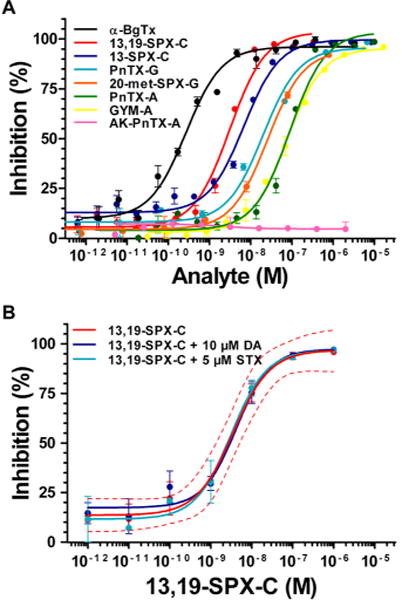Figure 2.

Detection of cyclic imine toxin by the microplate-receptor binding assay. (A) Inhibition of specific biotin-α-BgTx binding to Torpedo-nAChR by increasing concentrations of α-bungarotoxin (α-BgTx), 13,19-didesmethyl spirolide-C (13,19-SPX-C), 13-desmethyl spirolide-C (13-SPX-C), pinnatoxin-G (PnTX-G), 20-methyl spirolide-G (20-met-SPX-G), pinnatoxin-A, (PnTX-A), gymnodimine-A (GYM-A), and amino ketone pinnatoxin-A (AK-PnTX-A). Curve fitting was performed by nonlinear regression analysis using the Hill equation. Each data point is the mean value ± standard error of the mean (SEM) of at least three inhibition experiments. (B) Cross-reactivity: Inhibition of biotin-α-BgTx binding to Torpedo-nAChR by increasing concentrations of 13,19-SPX-C alone or in the presence of 10 μM domoic acid (DA) or 5 μM saxitoxin (STX). The dashed lines represent the 95% confidence band of the inhibition curve of 13,19-didesmethyl spirolide-C. Each data plot represents the mean value ± SEM of at least three independent experiments.
